
Successful Rice Farming and Processing in Nigeria Guidelines
April 3, 2023, 1:51 pm
In Nigeria and more commonly in most developing countries, the demand for food products has outstripped supply creating a huge deficit.
Although importation of food products is used partially to fill the growing deficits in the past, and presently, its continuation constitutes avoidable drain on Nigeria’s scarce foreign earnings, especially during this period of economic instability and dwindling oil prices.
Successful Rice Farming and Processing in Nigeria Guidelines
Rice has become an important strategic and daily staple food crop in Nigeria. Rice is one of the most consumed staples in Nigeria, with consumption per capita of 32kg. In the past decade, consumption has increased 4.7%, almost four times the global consumption growth, and reached 6.4 million tonnes in 2017 – accounting for 20% of Africa's consumption. As at 2011, rice accounted for 10% of household food spending, and 6.6% of total household spending. Africa's annual average consumption growth has averaged 4.8% in the last decade, outpacing the global rice consumption growth of 1.2%. Nigeria and Egypt account for most of this growth, consuming 30% of Africa's rice, but only 2% globally. Africa ranks the second largest rice importing region the world, with its share of imports rising from 7.6% to 34.1% between 1961 and 2017.

Rice Farming in Nigeria
Given the importance of rice as a staple food in Nigeria, boosting its production has been accorded high priority by the government in the past 7 years. The potential land area for rice production in Nigeria is between 4.6 million and 4.9million ha. Out of this, only about 1.7million ha—or 35% of the available land area—is presently cropped to rice.
Rice is produced in over 18 states of 36 states of Nigeria. Production has increased at an annual average of 3.7% over the past decade, reaching 3.7 million tonnes in 2017. Growth has been facilitated by an increase in area under cultivation for rice. The area under rice cultivation expanded from about 2.4 million harvested hectares in 2010 to 3.2 million harvested hectares in 2017 – the highest in the last 5 years. Rice mechanization is however low, negatively impacting rice yields and production. Nigeria's rice yield is one of the lowest globally at 2 tonne per hectare, relative to 4 – 7 tonne per hectare in Asia.
More than 80% of Nigeria's rice is produced by small scale farmers, while the remaining 20% is produced by commercial farmers. In addition, most of the processors are small scale with low capacity (less than 300kg/hr.) and obsolete mills. Production constraints within the rice value chain include low mechanisation, limited supply of agrochemicals and fertilisers, low adoption of modern varieties and inadequate extension services.
CHALLENGES OF RICE FARMING IN NIGERIA
There are many challenges associated with rice farming in Nigeria, these include:
- Climatic factors such as flood, soil salinity and erosion drought and global warming.
- Land tenure and Development: Farmlands in Nigeria are so fragmented that the average farm holding is about 1-2 ha. This perhaps is due to the land tenure system that tends to hinder the ownership of land in the country. Potential land suitable for rice irrigation is till untapped.
- Most of rice farmers are illiterates, unorganized with low-capital base and employed the use of simple and crude tools with little farm mechanization equipment usage.
- Weeds, pests and diseases problems.
- High cost of productive inputs such as seeds, fertilizers and other agro-chemicals.
- Improper handling/management of soil and water resource.
- In adequate extension services which resulted due to the low ratio of extension worker to farmers.
- Non –availability/inadequate credit facility to farmers.
- Lack of good roads in the rural areas.
- Irregular and fluctuating prices of rice grains due to seasonal variation.
- Lack of good linkage between research institutes and farmers
OPPORTUNITIES OF RICE FARMING IN NIGERIA
Rice farming offers a lot of opportunity to the growing populace such as:
- Source of employment to especially youth and women.
- Investment opportunity not only in production but also in land development, marketing and processing.
- Source of income to farmers and a host other groups.
- Source of food supply to the nation.
- Source of raw materials to processors and food manufacturing companies.
- Provides market to agro-allied and non-agro base products.
- Rice by-products such as straw, husk, bran can be used for livestock feeds
Total cultivatable land in Nigeria is estimated at 82 million hectares while area suitable for paddy cultivation is estimated at 4.6 million hectares or only 39% is currently utilized. The country is also blessed with untapped (3.14 million) hectares of land suitable for rice irrigation but only about 50,000 hectares is currently utilized. The annual national demand for rice is 5 million tons and the annual production is estimated at 3.4 million ton while the annual national imports stood at about 1.6 -2 million tons.
TYPES OF RICE FARMING IN NIGERIA
One of the most original features of rice is the fact that it can be grown under very different environment conditions particularly from the point of view of its water supply. Rice cultivation is virtually carried out in all the agro-ecological zones of Nigeria and despite this the area cultivated still appears small. The average rice farm holding in Nigeria is 1-2 hectares. The different types of rice cultivation in Nigeria are:
Rain Fed Upland Rice Farming
- Predominant in the southern part of country but can also be found in the north.
- Bulk of cultivation is in Ogun, Ondo, Oyo, Edo and Delta States.
- Upland rice is typically intercropped with various crops such as vegetables, maize, cassava, yams, and sorghum.
- FARO -45 (ITA 257), FARO-46 (ITA 150), FARO 55 (NERICA I) FARO-56 (NERICA 2), FARO- 25.Are some of the upland improved seed varieties.
- Major problems of upland rice are weeds, insects, rodents, birds and rice blast which may results due to mid-season drought.
Rain Fed Lowland Rice Farming
- Accounts for more than half of the total rice land area in Nigeria.
- Found mainly along the flooded River Valleys such as Niger, Benue, Kaduna Basins also found in Abakaliki and Ogoja areas of Ebonyi and Cross Rivers respectively.
- River banks or Fadama are usually flooded during the rainy season.
- Average yield per hectare high (2.2tons). As sole crop with fertilizers/improve seeds with no water control.
- FAROS – 15, 27, 35, 36, 37, 44, 52, 57, 60, 61.
Irrigated Rice Farming
- Account for 16% of total rice land area in Nigeria
- Good water control and two crops/annum
- Average yield per hectare (3.5 tons)
- FAROS – 44, 52, 57, 60, 61
Deep water/Floating Mangrove Rice Farming
- Where flooding achieves a depth of 60-100cm.
- Represents an increasing marginalized production system.
- Can be found in Sokoto Rima Valleys and Kebbi.
- FAROS - 6 ,7,
Mangrove Swamp Rice Farming
- Found where the ocean’s tidal action causes inundation at high tide and drainage at low tide.
- Soils are generally more fertile due to the regular deposit of silt during annual floods.
- Major constraints are high salinity of sulphate acidity.
- High labour cost, potential negative environmental impacts due to oil exploration.
Factors for Successful Rice Farming in Nigeria
Choice of Land
Choose fertile land with good water retention capacity (contain some clay and/or organic matter, i.e. loamy soil); clayed soils are most desirable. Heavy soils of valleys and fadamas are preferred. If you intend growing rice for one or more consecutive years on the same piece of land, it’s advisable to consult a reputable soil testing organisation like Soil Survey and Testing Service of the Institute of Agricultural Research and Training (IAR&T), Ibadan for advice and recommendations.
Choice of Seed
Use good quality seeds with no insect damage and no contaminants (weed seeds, stones, other seed types) with high percentage of viability (>80%).
Recommended Lowland Rice Farming Varieties
• Early maturing (<90–100 days): FARO 44 (SIPI) and ‘etumbe’ (local).
• Medium maturing (100–120 days): FARO21, 26, 29, 52 (WITA 4), 57 TOX 4004-43-1-2-1, and others.
• SUAKOKO 8 and FARO15: Suitable for iron toxic areas.
• Late maturing (>120 days): FARO 10, 12, 13, 16, 17, 19, 24, 28, and others.
• Gall midge-affected areas: Cisadane (FARO 51).
Sources to contact for good quality seed
• State Agricultural Development Project (ADP) that includes rice in its production programs.
• River Basin Development Authority.
• Seed company.
• Other rice farmers.
• WARDA–Nigeria
Choice of Fertilizers
Fertilizers supply nutrients essential for growth, nutrition and health of the rice plant. Fertilizers can be applied in the form of organic or inorganic (mineral) or both. Organic fertilizer can be in the form of manure, compost or crop residues. Mineral fertilizers are manufactured. It is important to apply the right quantity and at the right time to obtain optimum yields and for environmental protection.
Types of Fertilizers
Straight (single) fertilizers: These supply only one primary nutrient (e.g. N, P or K) to the crop. Some examples:
– Nitrogen: urea, ammonium sulphate, ammonium nitrate, calcium ammonium nitrate (CAN), and others.
– Phosphorus: single super-phosphate (SSP), triple superphosphate (TSP), and others.
– Potassium: muriate of potash (MOP; KCl)
Compound fertilizers: these supply more than one nutrient (e.g. N, P and K) to the crop. Some examples:
– NPK 15-15-15 (15%N; 15%P2O5; 15%K2O);
– NPK 20-10-10 (20% N; 10% P2O5; 10%K2O);
– NPK 30-10-0 (30%N; 10% P2O5; 0% K2O);
– Ammonium phosphate nitrate (APN).
Rice Farming Fertilizer Application
Fertilizer should be applied based on the residual nutrients found after soil testing, the expected yield and the type of fertilizer materials available. The farmer should strive to obtain fertilizer recommendations based on the analysis of soil samples. In situations where it is not possible to conduct a soil test due to high cost and unavailability of analytical services, or when the farmer is running out of time because the crop is subnormal in growth, the general recommendations below can be used.
General fertilizer recommendation based on agro-ecology
• Humid forest: Apply 60 kg N, 30–60 kg P2O5 and 30 kg of K2O per hectare
• Savannah: Apply 60–80 kg N, 30–60 kg P2O5 and 30 kg K2O per hectare
• Sudan/Sahel (under irrigation): Apply 100–120 kg N, 60 kg P2O5 and 60 kg K2O per hectare
Choice of Disease Control (RYMV, blast, brown spot, grain discoloration)
• Use disease resistant/tolerant varieties to RYMV (Rice Yellow Mottle Virus) and Blast.
• Use good cultural practices to limit infection of blast and RYMV such as:
- High nitrogen associated with low potassium can increase blast damage.
- Split application of nitrogen is better than one application to
reduce blast damage.
- Removing surrounding weeds to destroy the alternate host of
RYMV can reduce the virus infection.
• Use clean healthy seeds.
• Treat the seeds 1–2 days before sowing to control seed-borne Pathogens
Choice of Rice Farming Insect Control
Diopsis species control
• Cultural practices such as early sowing, narrow spacing of plants and maintaining weed-free fields should be observed to minimize Diopsis infestation.
• Synchronize planting over a large area to allow the most susceptible stage of rice to escape from Diopsis damage.
• Use of variety such as WAB 1159-2-12-11-6-9-1-2 with highly hairy leaves can trap Diopsis thoracica larvae.
African rice gall midge control
Early and synchronized planting of rice fields can minimize damage than late planting.
• Destroy alternative host plants such as rice ratoons, volunteers and Oryza Longistaminata
• Use of fertilizers: moderate levels of fertilizer (e.g. 60 kg/ha) should be used and applied in split doses.
• Movement of seedlings should be discouraged because such seedlings can be infested by AfRGM in the nursery
Choice of Rice Farming Bird Control
• Erect scarecrows randomly in the field
• Scare the bird manually.
• Tie old VHS tapes diagonally across and around the field
• Install bird nets if available.
• Use catapults.

Choice of Rice Farming Rodent Control
• Leave an uncropped margin of 1-2 meters around the field
• Distribute poison (bait) mixed with maize, sorghum, millet or rice in bamboo boxes
or containers in the uncropped margins and alleys.

• Fencing with bamboo or chicken wire mesh or polythene sheet around the field may deter rats and grass-cutters
• Use of local metal traps
Rice Harvesting
The crop is ready for harvest when the grains are hard and are turning yellow/brown. That is about 30–45 days after flowering or a month after 50% flowering. When this occurs, rice should be harvested by these techniques:
• Cut the stems with a sickle about 10–15 cm above the ground.
• Lay harvested rice crop in upright position for drying before threshing.
With good management and use of improved high yielding variety, 5 to 6 tonnes per hectare paddy is expected. You should also factor insurance to help cover losses from unexpected disease outbreaks and weather changes.
If you're interested in seeing how to put all this information together in order to start a rice farming and processing business, then you need to get our rice farming and processing business plan.
Our rice farming and processing business plan will show you the business of rice farming and processing. It will show you how to setup your rice farm, equipment you need for rice processing, an analysis of the rice market, consumption trends, rice marketing and sales, 5 years operations financials (profit and loss, balance sheet and cash flow statements) and so much more!
Our rice farming and processing business plan costs N150,000. To make offline payment to get our rice farming and processing business plan, call/chat with us on +2348089864121 or send an email to agsolutions@agricdemy.com
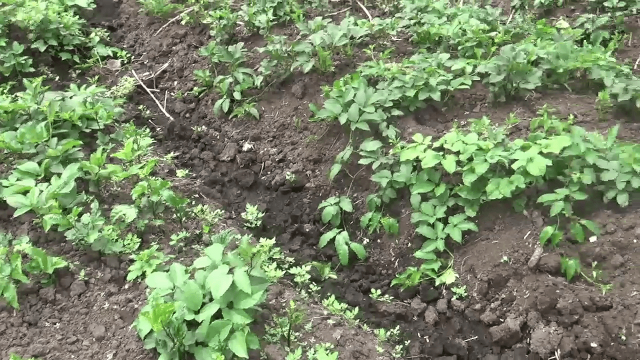
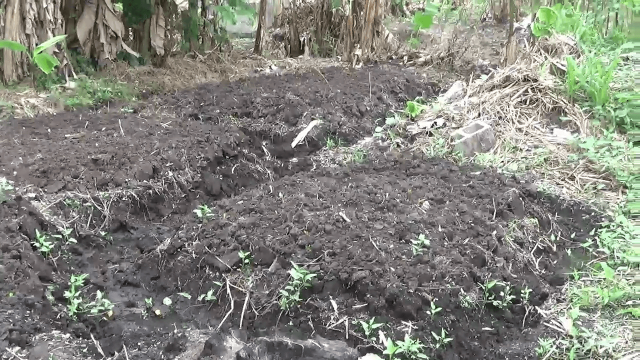

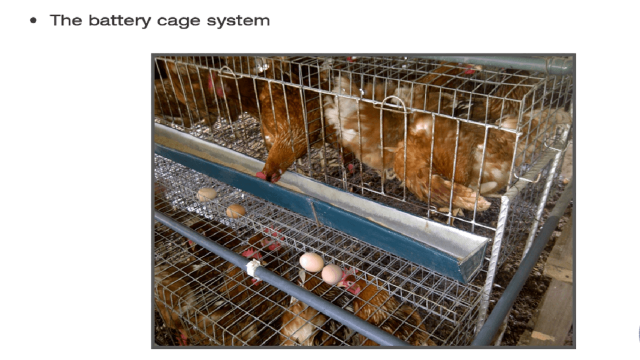

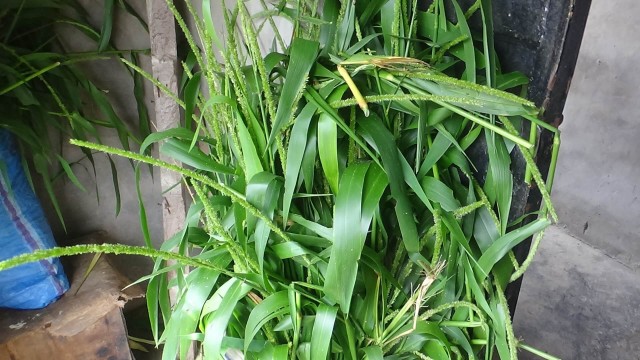


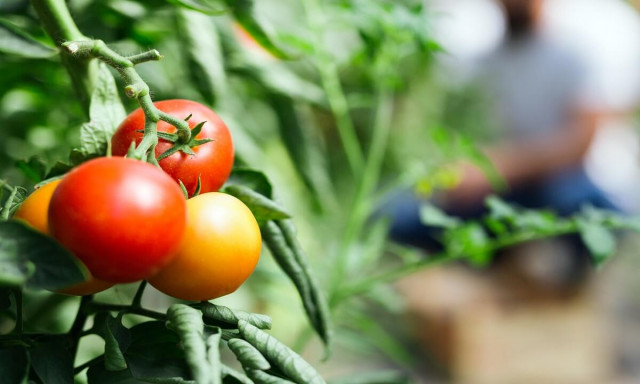



Share This Article: